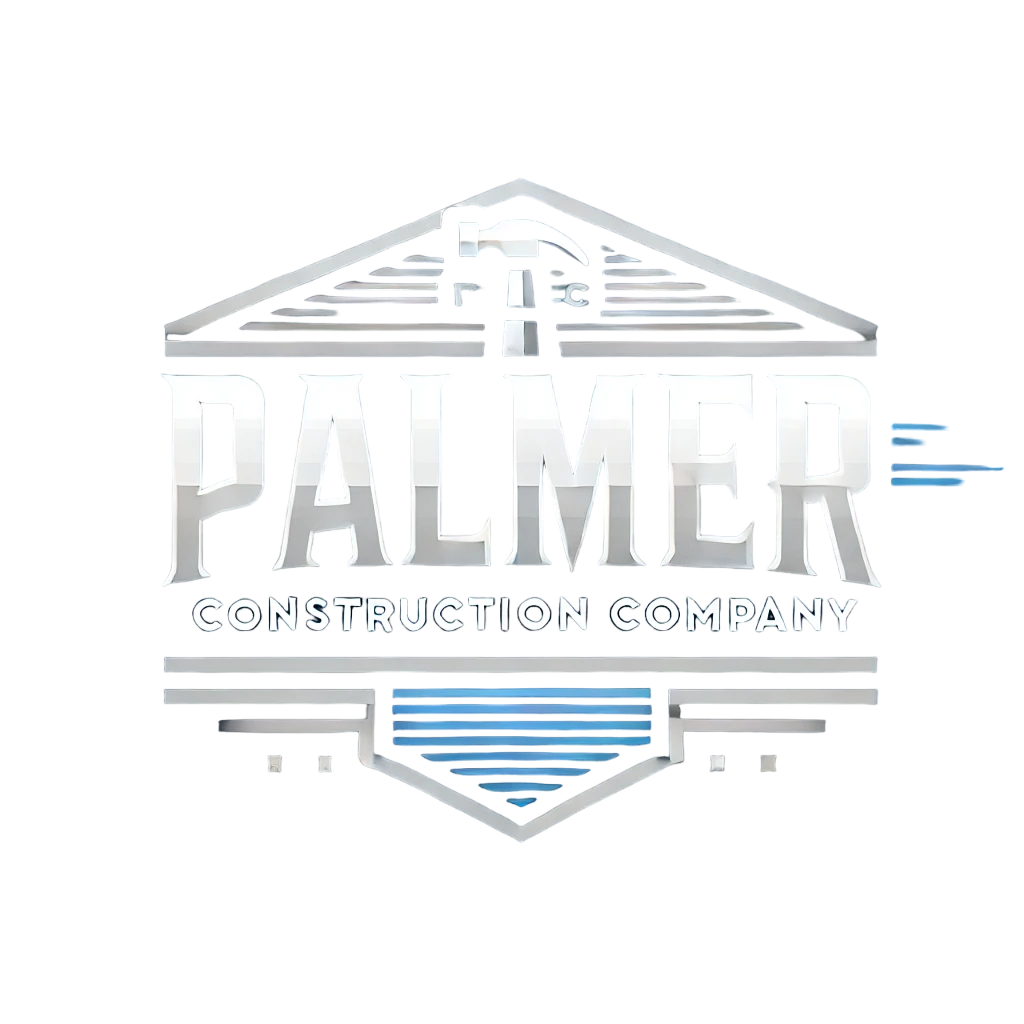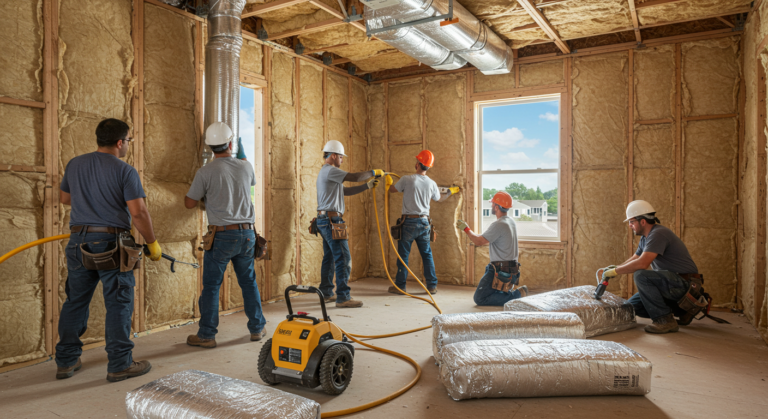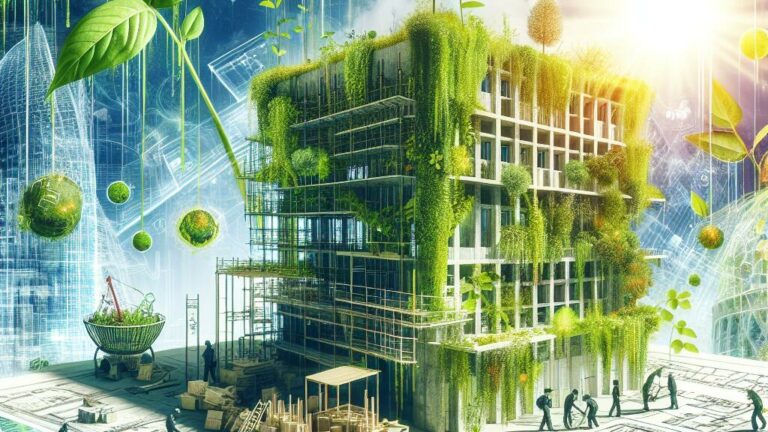Sustainable Practices in Construction
In the ever-evolving landscape of the construction industry, a seismic shift is occurring—a fervent embrace of sustainable practices aimed at curbing environmental impact while championing resource conservation. Picture this: recycled materials finding new life in robust structures, energy-efficient designs becoming the norm rather than the exception, and water usage being meticulously optimized to ensure every drop counts. These innovative techniques are rapidly morphing into standard operating procedures.
But wait—there’s more! Sustainable construction methods not only slice through carbon footprints but also trim operational costs like a seasoned chef dicing vegetables. They elevate the overall quality of buildings to new heights, crafting spaces that breathe life and well-being into their occupants. Imagine proper ventilation systems working tirelessly to circulate fresh air, non-toxic building materials creating safe havens free from harmful chemicals, and efficient waste management strategies keeping clutter at bay—all essential ingredients in what we now call green buildings.
By weaving sustainability into their fabric, commercial construction services aren’t merely ticking regulatory boxes; they’re tapping into a burgeoning market teeming with environmentally-conscious clients eager for change. In this intricate dance between innovation and responsibility, everyone stands to benefit—a truly symbiotic relationship blossoming amidst concrete and steel!
Benefits of Green Building Solutions
Integrating eco-conscious practices into construction projects is a veritable treasure trove of advantages. Picture this: green buildings, those marvels of modern design, often bask in the glow of lower energy costs thanks to their heightened efficiency and the smart use of sustainable materials. They harness renewable energy sources—think solar panels glinting under the sun—which dramatically slashes our reliance on traditional energy supplies that have long dominated the landscape.
But wait, there’s more! Using eco-friendly materials doesn’t just stop at cost savings; it elevates indoor air quality too, creating healthier spaces for everyone who inhabits them. It’s like breathing fresh mountain air instead of stale office vibes!
Now let’s talk about market dynamics—the trend is unmistakable! Sustainable construction solutions are all the rage now, prompting property values to soar higher than ever before. Buildings crafted with these green principles naturally draw in tenants and buyers alike; after all, who wouldn’t want to live or work in an environment that champions sustainability? Developers stand poised to reap rewards through a plethora of tax incentives and financing options available for projects flaunting those coveted green certification standards.
This isn’t merely an environmental boon—it’s a savvy business move as well! It harmonizes financial aspirations with responsible practices, demonstrating that doing right by our planet can also do wonders for your bottom line.
Safety Standards in Commercial Construction
In the bustling realm of commercial construction, safety reigns supreme—a non-negotiable pillar designed to safeguard both workers and the very essence of projects themselves. This intricate dance with danger unfolds daily on sites teeming with heavy machinery, towering heights, and the electrifying buzz of live wires. By adhering to well-established safety standards, risks are deftly minimized amidst this chaotic symphony.
Training sessions come alive as personnel dive into regular drills and certifications, sharpening their awareness like a finely honed blade against lurking threats. Safety programs emerge not merely as protocols but as lifelines woven intricately throughout operations—each thread aligning seamlessly with OSHA guidelines that stand sentinel over worker welfare.
Yet the vigilance doesn’t stop there; periodic safety audits slice through complacency like a hot knife through butter, illuminating potential chinks in armor that could compromise well-laid plans. The art of effective communication among team members becomes paramount—every whisper about procedures fosters an infectious culture steeped in accountability.
This unwavering commitment to safety does more than shield workers from harm; it weaves a tapestry where efficiency flourishes and costs spiral downward—the dual benefits manifesting in reduced accidents and plummeting insurance claims. In this dynamic environment, sustainability finds its footing amid a thriving operational landscape, driven by an ethos that places human life at its core while pushing boundaries toward progress.
Importance of Compliance and Regulations
Navigating the labyrinth of industry regulations is absolutely vital for upholding safety standards throughout the chaotic dance of construction. Compliance isn’t merely a checkbox; it’s a lifeline, ensuring that projects align with the intricate web of local, state, and federal guidelines—an endeavor that significantly curtails risks not just for workers but also for Mother Earth herself. Neglecting these essential rules? A recipe for disaster: think hefty fines, maddening project delays, or even the specter of legal repercussions looming large. Construction firms must place compliance at the forefront—not just as an obligation but as a shield to safeguard their hard-earned reputation and operational integrity.
These regulatory frameworks emerge from a necessity to tackle the myriad challenges and hazards inherent in diverse construction activities. They lay out structured pathways that champion best practices, thereby securing both worker health and community well-being. Companies weaving these standards into their daily operations can unlock enhanced project efficiency while building trust among stakeholders like never before—and don’t forget those inspections! Smoother approvals await those who do so. Highlighting compliance transcends mere avoidance of penalties; it embodies a steadfast commitment to quality craftsmanship and ethical principles in construction practice—the kind every conscientious builder should aspire to uphold.
The Role of Technology in Construction
The infusion of cutting-edge technology into the construction realm has sparked a seismic shift in how projects are managed and executed. Picture this: Building Information Modeling (BIM) as a digital oracle, enabling teams to craft intricate simulations that breathe life into designs while spotlighting potential pitfalls long before they materialize. Meanwhile, drones—those aerial marvels—are swiftly becoming indispensable allies, gliding over job sites to survey landscapes and monitor building progress with an almost uncanny real-time precision.
And let’s not overlook the magic of mobile apps! They’re like communication superheroes, effortlessly weaving together stakeholders’ voices so every team member stays in sync with project goals.
Now, automation and robotics? Oh boy—they’re revolutionizing efficiency on-site! With prefabrication techniques allowing components to be crafted off-site, we see labor costs plummet and weather-related delays shrink away like shadows at noon. 3D printing? It’s already shaking up conventional methods of construction by ushering in an era where customization is limitless and production speeds soar to dizzying heights.
As these technologies continue their relentless march forward, they cultivate a fertile ground for innovation while simultaneously elevating the overall success rates of projects across the board!
Innovations That Transform the Industry
The construction industry is in the throes of a technological upheaval, one that’s radically transforming the very fabric of how projects are conceived, executed, and overseen. Imagine this: Building Information Modeling (BIM) unfurls like a digital tapestry, providing intricate visualizations that empower stakeholders to collaborate with unprecedented efficacy throughout every twist and turn of a project’s lifecycle. Meanwhile, drones buzz overhead and 3D printing whirs away—both sharpening efficiency and precision while slashing material waste into oblivion. These cutting-edge marvels not only bolster safety on job sites but also enhance project management finesse, all contributing to a striking boost in cost-effectiveness.
But wait! There’s more; smart technology strides onto the scene with automation and data analytics weaving seamlessly into construction processes. Picture sensors nestled within equipment monitoring performance in real-time—predicting maintenance needs before they become issues and minimizing downtime as if by magic. The fusion of augmented reality (AR) and virtual reality (VR) opens up immersive training avenues for workers, supercharging skill development while heightening safety consciousness. As these innovations continue their relentless march forward, they promise to redefine workflows entirely—stretching the limits of what we once thought possible in commercial construction!
| Innovation | Description | Benefits |
|---|---|---|
| Building Information Modeling (BIM) | A digital model that enables visualization and collaboration throughout a project’s lifecycle. | Enhanced collaboration, improved project efficiency, and reduced rework. |
| Drones | Unmanned aerial vehicles used for surveying and monitoring construction sites. | Increased site visibility, improved data accuracy, and enhanced safety. |
| 3D Printing | Layer-by-layer construction of materials to create building components. | Reduced material waste, faster construction times, and design flexibility. |
| Smart Technology | Automation and data analytics integrated into construction processes. | Predictive maintenance, reduced downtime, and increased operational efficiency. |
| Augmented & Virtual Reality (AR/VR) | Immersive technologies for training and project visualization. | Enhanced skill development, improved safety training, and better communication of ideas. |
Choosing the Right Contractor
Choosing the right contractor can be a game-changer for any commercial construction endeavor—it’s not merely about skills and experience; it’s about finding someone who truly resonates with your vision, who sees the blueprint of your aspirations as clearly as you do. Dive into their portfolio like an explorer unearthing treasure—assess previous projects not just on surface level but dig deeper to understand outcomes and impacts. Don’t forget to check references; a solid reputation is worth its weight in gold in this industry.
And let’s talk money: scrutinizing their financial stability and bonding capacity isn’t just smart; it’s essential. This gives you a glimpse into how well they might handle the intricate demands your project will impose.
Communication? Oh, that’s key! Keep those channels open throughout your selection journey. Look for contractors who embody transparency—not just answering questions but engaging in meaningful dialogue that sparks ideas and clarifies expectations. Also, take note of how they manage projects: what are their safety protocols? Are they compliant with regulations? These factors aren’t mere checkboxes—they’re crucial elements ensuring that when challenges arise (as they often do), your chosen contractor can steer the ship smoothly while keeping everything on track financially and chronologically.
Factors to Consider in the Selection Process
When it comes to picking a contractor for commercial construction, diving deep into their experience and expertise—especially regarding the specific project at hand—is absolutely paramount. Contractors who’ve successfully navigated similar waters in the past are often better equipped to tackle unforeseen hurdles that might arise. Delving into their portfolio of past work and sifting through client testimonials can unveil crucial insights about the contractor’s reliability, craftsmanship, and knack for sticking to deadlines.
But wait! We can’t overlook financial stability—it plays a pivotal role in this decision-making dance. A financially sound contractor is far more likely to see your project through without unexpected hiccups along the way. It’s essential to scrutinize their ability to deliver an accurate, detailed estimate that breaks down everything from materials and labor costs to those pesky additional expenses. This level of transparency not only keeps your budget on track but also lays down a solid groundwork of trust between you and your chosen contractor—a cornerstone for any successful partnership!
Future Trends in Commercial Construction
The realm of commercial construction is on the brink of a seismic shift, spurred by rapid technological evolution and shifting market expectations. Enter Building Information Modeling (BIM)—no longer just a novel idea but an emerging standard that’s reshaping how stakeholders collaborate, driving project outcomes to new heights. Meanwhile, the infusion of artificial intelligence and machine learning into the mix is revolutionizing workflows like never before; processes are being streamlined in ways previously thought impossible, allowing for sharper project management and smarter resource allocation. With these cutting-edge innovations comes enhanced efficiency—real-time progress tracking not only slashes costs but also compresses timeframes.
At the same time, sustainability stands unwavering at the pinnacle of industry priorities. As consciousness surrounding climate change intensifies, developers find themselves leaning towards eco-friendly materials and energy-efficient designs with fervor. The once-rare integration of renewable energy sources into new builds is rapidly becoming commonplace—a clear nod toward long-term environmental stewardship. And let’s not overlook adaptive reuse projects—they’re rising stars in this narrative, breathing new life into older structures while deftly minimizing waste. Together, these trends paint a vivid picture: one where creativity meets responsibility in crafting spaces that are as innovative as they are sustainable.
Emerging Techniques and Market Changes
The commercial construction landscape is undergoing a fascinating metamorphosis, veering towards the intriguing realms of modular and prefabricated building techniques. Picture this: components crafted off-site, only to be deftly assembled at their final destination—an approach that slashes construction time and trims labor costs with remarkable efficiency. By fine-tuning the entire building process, companies find themselves dancing nimbly in response to market whims, tackling both efficiency challenges and sustainability goals head-on.
But wait! There’s more on this riveting journey. The rise of cutting-edge project management software coupled with the revolutionary Building Information Modeling (BIM) is reshaping how teams engage and interact. These innovative technologies usher in a new era of real-time updates and stunning visualizations, empowering stakeholders to make savvy decisions throughout every twist and turn of the construction lifecycle. As firms wholeheartedly adopt these avant-garde techniques, they not only elevate their operational prowess but also sharpen their competitive edge in an ever-shifting marketplace brimming with possibilities.
- Increased focus on sustainability through the use of eco-friendly materials and energy-efficient designs.
- Greater collaboration among project stakeholders facilitated by advanced communication tools and software.
- Enhanced risk management capabilities leading to fewer project overruns and delays.
- Financial benefits via reduced waste and optimized resource allocation.
- Improved safety protocols resulting from better planning and modeling techniques.
- Adoption of smart technologies and IoT for enhanced building performance and maintenance.
- Continued evolution in workforce training programs to adapt to new construction methodologies.
Conclusion
The landscape of commercial construction is in a constant state of flux, propelled by a whirlwind of technological innovations, eco-friendly practices, and ever-tightening safety regulations. The embrace of green building solutions isn’t just an environmental boon; it’s also a savvy move that bolsters the economic sustainability of projects. With compliance and regulatory focus ramping up, the industry’s dedication to safety and quality shines through, ensuring that every endeavor rises to meet the pinnacle of excellence.
As enterprises traverse this rapidly shifting terrain, pinpointing the right contractor becomes crucial—an almost Herculean task! A meticulous selection process—one that scrutinizes expertise, prior successes, and alignment with project aspirations—can dramatically sway results. Meanwhile, the fusion of cutting-edge techniques with market fluctuations will sculpt the future landscape of commercial construction. This evolution presents a dual-edged sword: challenges loom large alongside tantalizing opportunities for all stakeholders involved in this vibrant sector.






